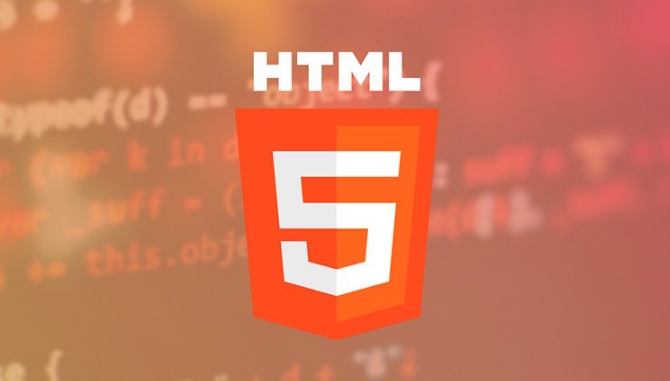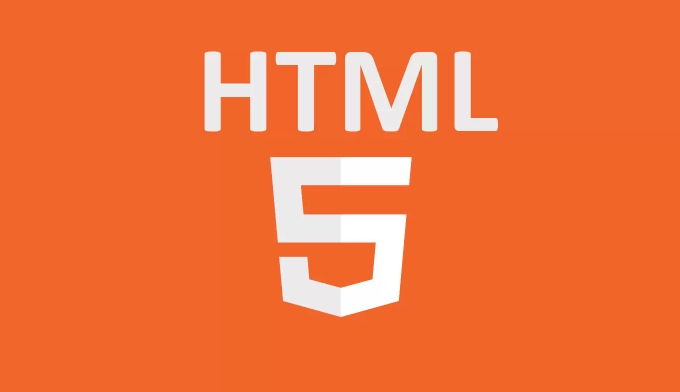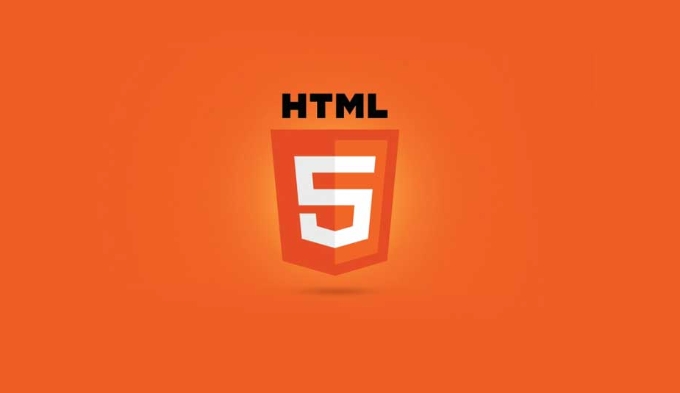Differentiating HTML5 localStorage and sessionStorage
Jul 15, 2025 am 03:12 AMThe core difference between localStorage and sessionStorage lies in data persistence and scope. 1. Data life cycle: localStorage data is stored for a long time unless manually cleared, and sessionStorage data is cleared after closing the tab; 2. Scope difference: localStorage is shared among all tabs on the same website, and sessionStorage is stored independently; 3. Usage scenario: localStorage is suitable for saving long-term data such as user preferences and login status. sessionStorage is suitable for temporary form data or single session flow; 4. API consistency: the operation methods of the two are the same, only the object names are different, and both store data in the form of strings.

If you've ever worked with client-side storage in web development, you've probably come across localStorage and sessionStorage . They look similar at first glance but behave quite differently. The main difference lies in persistence — what happens to the data when the browser is closed or reopened.

Let's break it down in a practical way.
1. Lifespan: When Data Gets Cleared
This is the most important distinction between the two.

localStorage :
Data stays around indefinitely . It doesn't expire on its own. Even if the user closes the browser or restarts their computer, the data remains until explicitly cleared by code or manually via browser settings.-
sessionStorage :
Data only lasts as long as the browser tab is open. Once the tab is closed (not just the window), the data disappears.
So, use localStorage for things like saving user preferences that should stick around, and sessionStorage for temporary data tied to one browser session — like form inputs during a checkout process.
2. Scope: How Tabs and Windows Interact
Another key point is how multiple tabs or windows affect each storage type.
localStorage :
Shared across all tabs and windows of the same origin (same website). If one tab updates the data, other tabs will see the change.sessionStorage :
Isolated per tab. Each tab has its own separate storage, even if they're visiting the same page.
For example, if a user opens your site in two tabs:
- With
localStorage, both tabs can read and modify the same stored data. - With
sessionStorage, each tab works with its own copy — changes in one won't affect the other.
3. Common Use Cases
Knowing where to use each makes a big difference in functionality.
When to use localStorage:
- Saving login state (eg, "remember me" feature)
- Storing user preferences (theme, language, layout settings)
- Caching data that doesn't need to be re-fetched every time
When to use sessionStorage:
- Holding temporary form data before submission
- Managing step-by-step processes (like multi-page forms or wizards)
- Tracking user behavior within a single session without persisting long-term
You might also mix both — for example, using sessionStorage to track progress in a survey and then save the final result to localStorage .
4. API Similarity Makes Switching Easy
Here's the good news: both APIs work almost exactly the same way. You'll use the same methods:
localStorage.setItem('key', 'value'); localStorage.getItem('key'); sessionStorage.setItem('key', 'value'); sessionStorage.getItem('key');
The only thing that changes is the object name ( localStorage vs sessionStorage ). That means switching between them later isn't a big deal if your needs change.
Also, both store data as strings only. So if you want to save objects or arrays, remember to JSON.stringify() before storing, and JSON.parse() when retrieving.
In short, the choice comes down to whether you want the data to stay around after the session ends. Keep that in mind, and picking the right one becomes straightforward.
Basically that's it.
The above is the detailed content of Differentiating HTML5 localStorage and sessionStorage. For more information, please follow other related articles on the PHP Chinese website!

Hot AI Tools

Undress AI Tool
Undress images for free

Undresser.AI Undress
AI-powered app for creating realistic nude photos

AI Clothes Remover
Online AI tool for removing clothes from photos.

Clothoff.io
AI clothes remover

Video Face Swap
Swap faces in any video effortlessly with our completely free AI face swap tool!

Hot Article

Hot Tools

Notepad++7.3.1
Easy-to-use and free code editor

SublimeText3 Chinese version
Chinese version, very easy to use

Zend Studio 13.0.1
Powerful PHP integrated development environment

Dreamweaver CS6
Visual web development tools

SublimeText3 Mac version
God-level code editing software (SublimeText3)
 Handling reconnections and errors with HTML5 Server-Sent Events.
Jul 03, 2025 am 02:28 AM
Handling reconnections and errors with HTML5 Server-Sent Events.
Jul 03, 2025 am 02:28 AM
When using HTML5SSE, the methods to deal with reconnection and errors include: 1. Understand the default reconnection mechanism. EventSource retrys 3 seconds after the connection is interrupted by default. You can customize the interval through the retry field; 2. Listen to the error event to deal with connection failure or parsing errors, distinguish error types and execute corresponding logic, such as network problems relying on automatic reconnection, server errors manually delay reconnection, and authentication failure refresh token; 3. Actively control the reconnection logic, such as manually closing and rebuilding the connection, setting the maximum number of retry times, combining navigator.onLine to judge network status to optimize the retry strategy. These measures can improve application stability and user experience.
 Integrating CSS and JavaScript effectively with HTML5 structure.
Jul 12, 2025 am 03:01 AM
Integrating CSS and JavaScript effectively with HTML5 structure.
Jul 12, 2025 am 03:01 AM
HTML5, CSS and JavaScript should be efficiently combined with semantic tags, reasonable loading order and decoupling design. 1. Use HTML5 semantic tags, such as improving structural clarity and maintainability, which is conducive to SEO and barrier-free access; 2. CSS should be placed in, use external files and split by module to avoid inline styles and delayed loading problems; 3. JavaScript is recommended to be introduced in front, and use defer or async to load asynchronously to avoid blocking rendering; 4. Reduce strong dependence between the three, drive behavior through data-* attributes and class name control status, and improve collaboration efficiency through unified naming specifications. These methods can effectively optimize page performance and collaborate with teams.
 Declaring the correct HTML5 doctype for modern pages.
Jul 03, 2025 am 02:35 AM
Declaring the correct HTML5 doctype for modern pages.
Jul 03, 2025 am 02:35 AM
Doctype is a statement that tells the browser which HTML standard to use to parse the page. Modern web pages only need to be written at the beginning of the HTML file. Its function is to ensure that the browser renders the page in standard mode rather than weird mode, and must be located on the first line, with no spaces or comments in front of it; there is only one correct way to write it, and it is not recommended to use old versions or other variants; other such as charset, viewport, etc. should be placed in part.
 Receiving real-time data with HTML5 Server-Sent Events (SSE).
Jul 02, 2025 pm 04:46 PM
Receiving real-time data with HTML5 Server-Sent Events (SSE).
Jul 02, 2025 pm 04:46 PM
Server-SentEvents (SSE) is a lightweight solution provided by HTML5 to push real-time updates to the browser. It realizes one-way communication through long HTTP connections, which is suitable for stock market, notifications and other scenarios. Create EventSource instance and listen for messages when using: consteventSource=newEventSource('/stream'); eventSource.onmessage=function(event){console.log('Received message:',event.data);}; The server needs to set Content-Type to text/event
 Why is WeChat taking up so much storage?
Jul 04, 2025 am 12:07 AM
Why is WeChat taking up so much storage?
Jul 04, 2025 am 12:07 AM
WeChat occupies a large amount of storage space mainly because of media files, cached data, chat records and applet content. 1. Automatic download of media files leads to accumulation, especially in group chats, which are not easy to detect; 2. The cached data becomes redundant over time, including avatars, web pages and mini-program caches; 3. Long-term chat records and backups hide space, and forwarding messages and documents gradually accumulate; 4. Mini-programs and browsing content will also retain local data, adding additional burden. You can free up space by turning off automatic downloads, regularly cleaning caches, selectively deleting chat history, and managing applets.
 Improving SEO with HTML5 semantic markup and Microdata.
Jul 03, 2025 am 01:16 AM
Improving SEO with HTML5 semantic markup and Microdata.
Jul 03, 2025 am 01:16 AM
Using HTML5 semantic tags and Microdata can improve SEO because it helps search engines better understand page structure and content meaning. 1. Use HTML5 semantic tags such as,,,, and to clarify the function of page blocks, which helps search engines establish a more accurate page model; 2. Add Microdata structured data to mark specific content, such as article author, release date, product price, etc., so that search engines can identify information types and use them for display of rich media summary; 3. Pay attention to the correct use of tags to avoid confusion, avoid duplicate tags, test the effectiveness of structured data, regularly update to adapt to changes in schema.org, and combine with other SEO means to optimize for long-term.
 Explaining the HTML5 `` vs `` elements.
Jul 12, 2025 am 03:09 AM
Explaining the HTML5 `` vs `` elements.
Jul 12, 2025 am 03:09 AM
It is a block-level element, suitable for layout; it is an inline element, suitable for wrapping text content. 1. Exclusively occupy a line, width, height and margins can be set, which are often used in structural layout; 2. No line breaks, the size is determined by the content, and is suitable for local text styles or dynamic operations; 3. When choosing, it should be judged based on whether the content needs independent space; 4. It cannot be nested and is not suitable for layout; 5. Priority is given to the use of semantic labels to improve structural clarity and accessibility.
 Getting the user's current location with the HTML5 Geolocation API.
Jul 02, 2025 pm 05:03 PM
Getting the user's current location with the HTML5 Geolocation API.
Jul 02, 2025 pm 05:03 PM
When using HTML5Geolocation API to obtain user location, you must first obtain user authorization, and request and explain the purpose at the right time; the basic method is navigator.geolocation.getCurrentPosition(), which contains successful callbacks, wrong callbacks and configuration parameters; common reasons for failure include permission denied, browser not supported, network problems, etc., alternative solutions and clear prompts should be provided. The specific suggestions are as follows: 1. Request permissions when the user operation is triggered, such as clicking the button; 2. Use enableHighAccuracy, timeout, maximumAge and other parameters to optimize the positioning effect; 3. Error handling should distinguish between different errors







